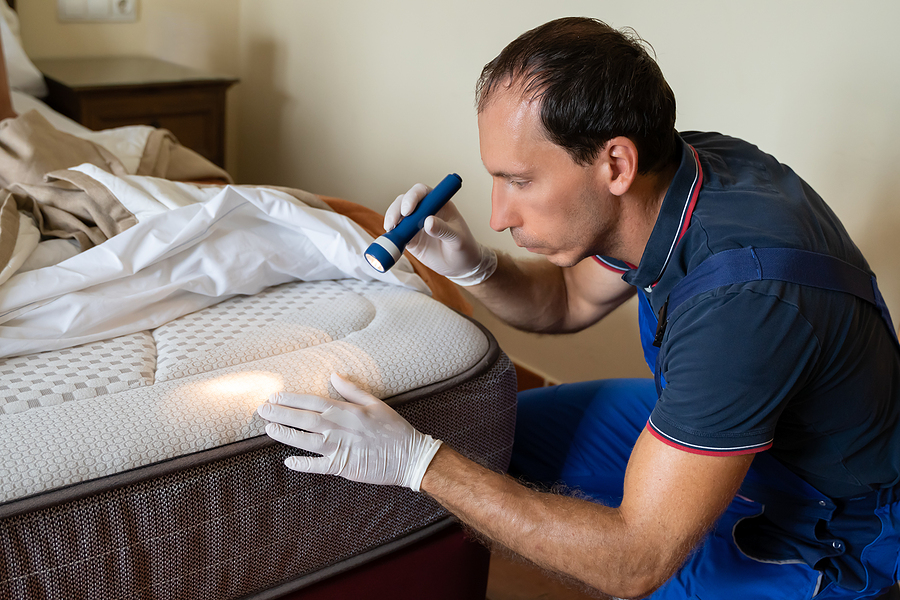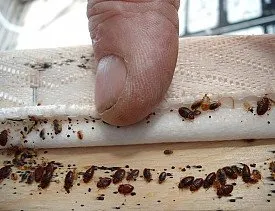Local Bed Bug Exterminator: DC Heat Treatment Services Available
Local Bed Bug Exterminator: DC Heat Treatment Services Available
Blog Article
Exploring the Scientific Research Behind Bed Bug Warmth Treatments as a Sustainable Parasite Administration Strategy
In the world of insect monitoring, the quest for lasting and effective remedies remains a continuous pursuit. One such technique that has actually obtained traction in recent times is the usage of warm therapies to combat bed insect invasions. By taking advantage of the scientific research behind thermal death factors for these relentless insects, warmth therapies provide an encouraging alternative to standard chemical-based strategies. The ins and outs of just how heat properly eliminates bed insects and the more comprehensive implications for sustainable bug administration techniques make this a topic worth checking out better.
Bed Bug Warmth Therapy Refine

Thermal Death Factor for Bed Insects
Exposing bed pests to elevated temperature levels beyond their thermal resistance range is essential for attaining reliable removal in heat therapy procedures. The thermal death factor for bed bugs describes the temperature level at which these insects can not endure. Research shows that bed bugs start to die when subjected to temperature levels above 113 ° F(45 ° C) for a continual period. As the temperature raises, so does the mortality price of bed bugs. At around 118 ° F(48 ° C ), bed insects begin to die swiftly, with a mortality price of nearly 99% within minutes of direct exposure. This demonstrates the level of sensitivity of bed insects to high temperatures and highlights the efficiency of warmth therapies in eliminating problems. By reaching and preserving temperature levels above the thermal death point for bed insects, parasite management experts can make certain extensive elimination of bed insect populaces, consisting of hard-to-reach locations where chemical treatments may be much less efficient. Comprehending the thermal death point for bed insects is essential for carrying out effective warmth treatment strategies Recommended Site and achieving sustainable bug monitoring outcomes.
Benefits of Heat Treatments
Having actually developed the vital thermal death factor for bed insects, it is critical to now discover the significant advantages that heat treatments offer in properly eliminating these durable insects. One of the primary advantages is that warm can pass through deep into fractures and gaps where bed pests hide, making certain that also the most hard-to-reach locations are heated up to dangerous temperatures.
Moreover, heat treatments are safe and environmentally pleasant, making them a lasting pest administration approach. Unlike chemical pesticides, warmth therapies do not leave harmful deposits that can pose dangers to human health or the atmosphere. This aspect is particularly essential in sensitive settings such as health centers, schools, and property areas where chemical usage might not be desirable.
Additionally, heat therapies have a high success rate in removing bed pest problems in a solitary treatment, decreasing the demand for multiple brows through and minimizing interruption to owners. This performance not just saves time and cash yet additionally gives satisfaction to those handling bed insect issues.
Performance of Warmth Treatment

Heat treatments have the added advantage of killing bed pest eggs, which are usually immune to standard chemical therapies. Overall, the efficiency of warmth therapies in getting rid of bed insect problems makes them a dependable and sustainable bug monitoring approach.
Sustainable Bug Management Advantages
Executing sustainable parasite administration techniques uses lasting advantages for both the environment and public health and wellness. By utilizing techniques such as warm therapies for parasite control, we can decrease the dependence on dangerous chemical pesticides that can have damaging effects on communities and human health and wellness - exterminator near me. Sustainable bug administration techniques assist in maintaining biodiversity by targeting particular insects without hurting non-target organisms, consequently maintaining a well balanced ecosystem
In addition, lasting pest administration methods add to the total health and wellness and well-being of the public. By decreasing exposure to poisonous chemicals utilized in typical insect control approaches, warmth treatments supply a safer option for insect monitoring in residential, commercial, and public spaces. This decrease in chemical usage also assists in avoiding pesticide residues from contaminating water, dirt, and air, securing environmental top quality.
Final Thought
To conclude, bed pest heat therapies have actually been revealed to be a efficient and sustainable pest management method. The thermal death factor for bed bugs makes them prone to warm treatments, which have various advantages over standard chemical therapies. The effectiveness of heat treatments in removing bed pest infestations look at this web-site while decreasing ecological influence highlights the potential of this technique as a lasting remedy for pest control.
The bed insect heat therapy process entails increasing the temperature within ravaged locations to a degree that successfully gets rid of bed pests and their eggs. By getting to and preserving temperature levels above the thermal death point for bed insects, insect monitoring professionals can make sure thorough elimination of bed insect populaces, consisting of hard-to-reach locations where chemical treatments may be much less efficient. One of the primary benefits is that heat can permeate deep right into cracks and crevices where bed insects conceal, guaranteeing that also the most hard-to-reach locations are heated up to lethal temperature levels. Unlike chemical therapies that might leave behind immune populations, warmth therapies use a environmentally friendly and safe service that can pass through deep right into furniture, wall surfaces, and other hard-to-reach locations where bed pests conceal.
The thermal death factor for bed pests makes them vulnerable to heat therapies, which have countless advantages over standard chemical therapies.
Report this page